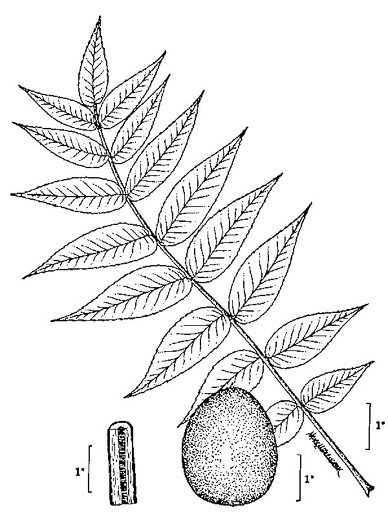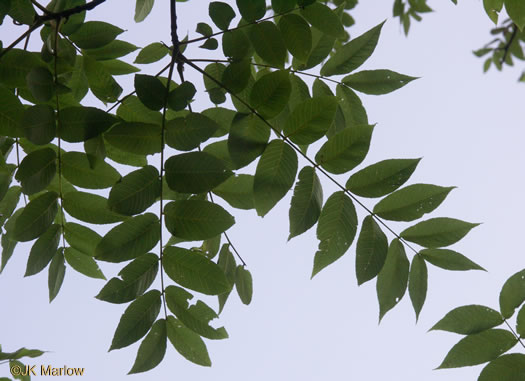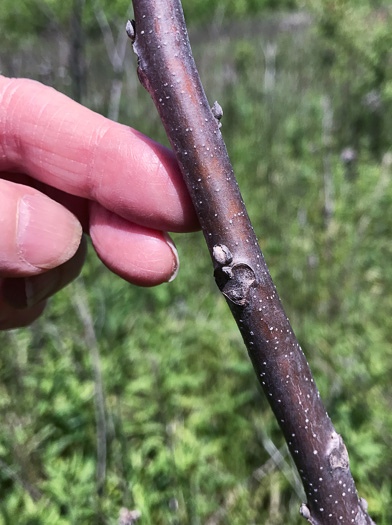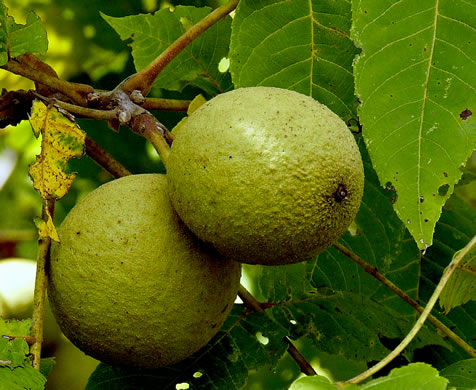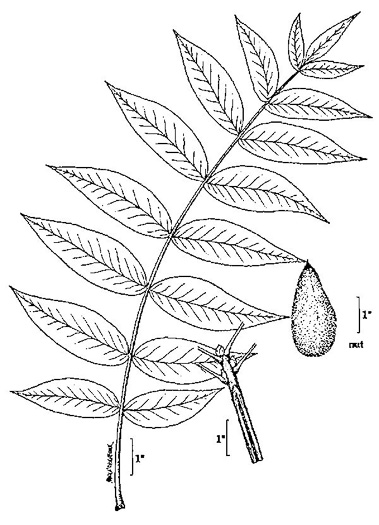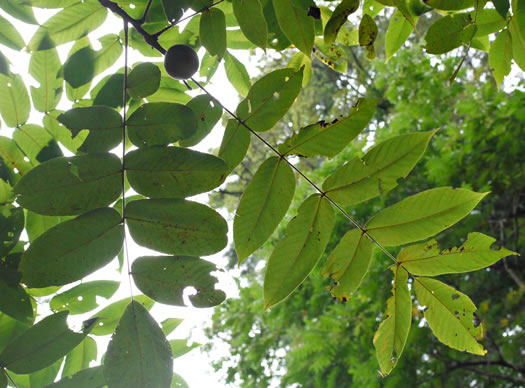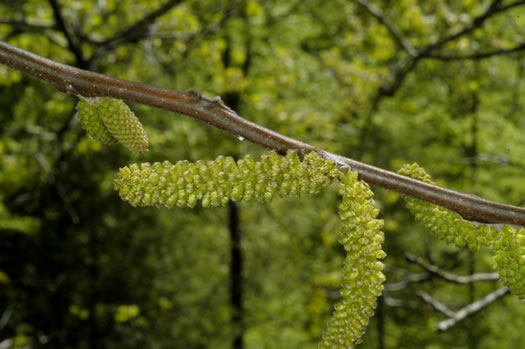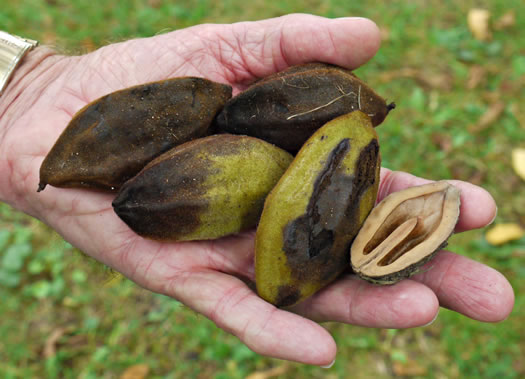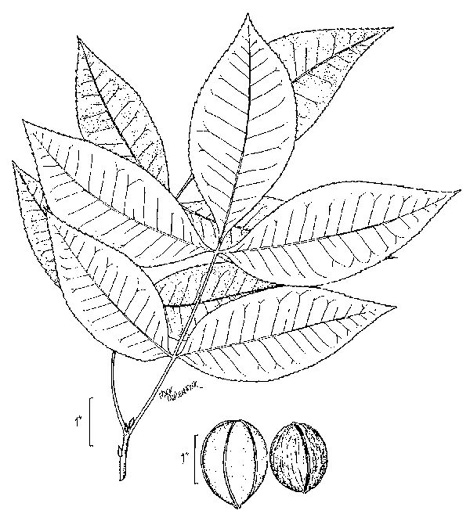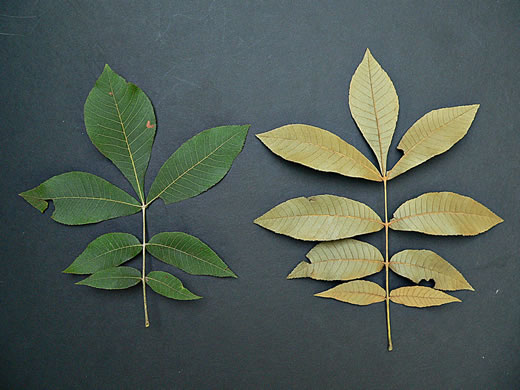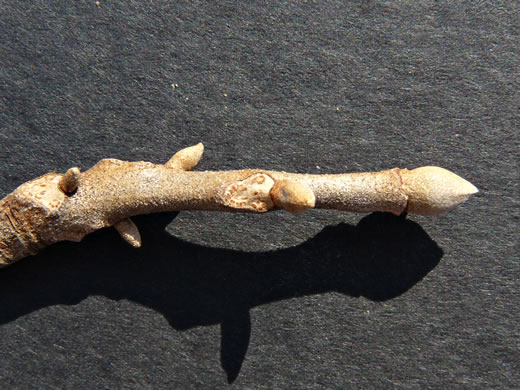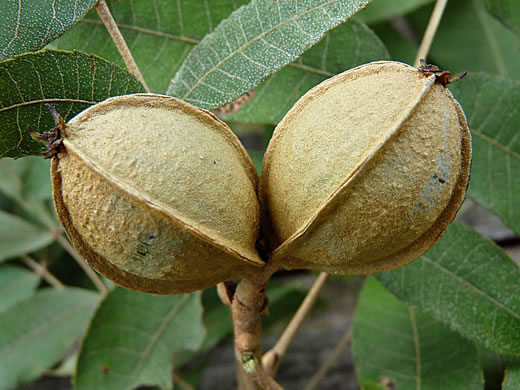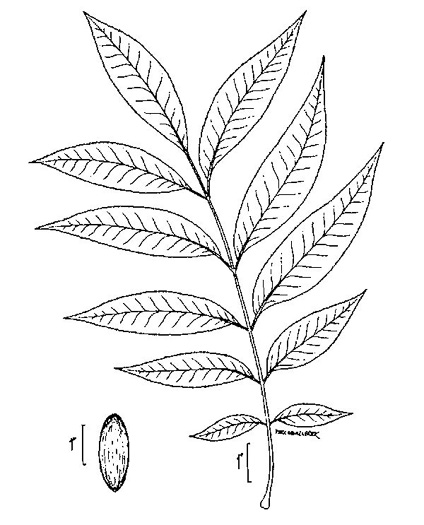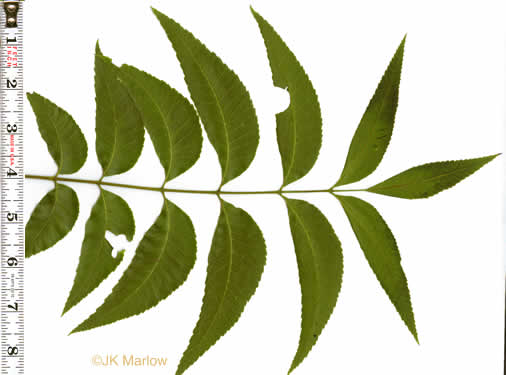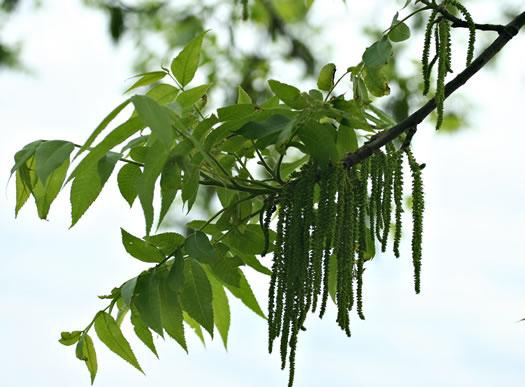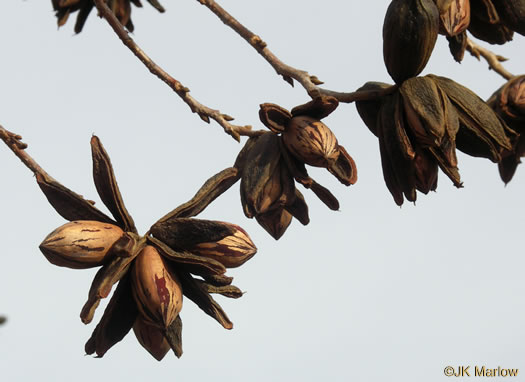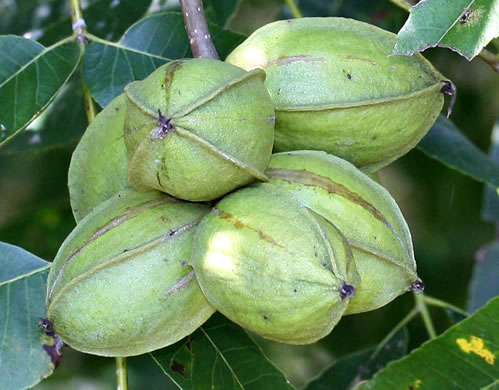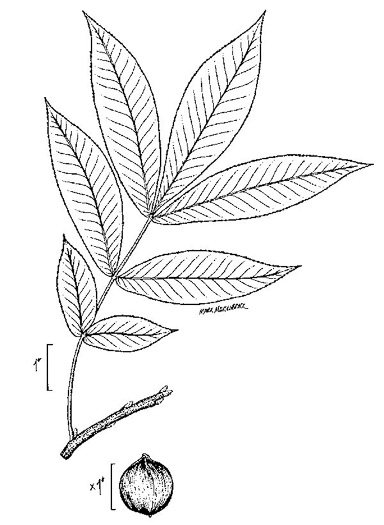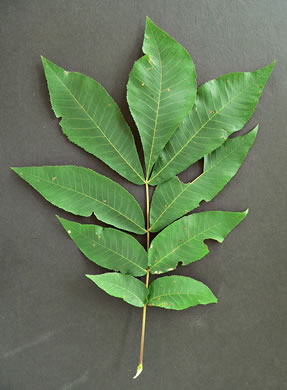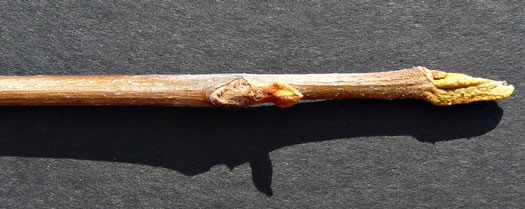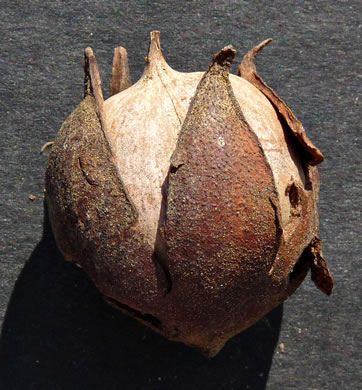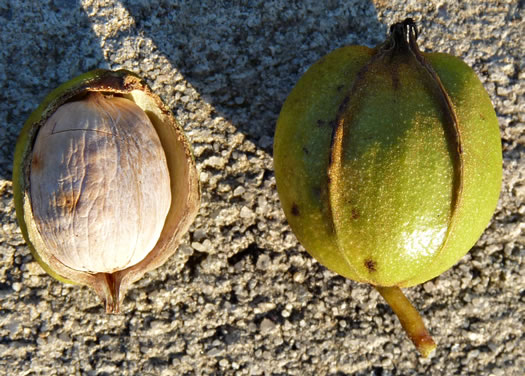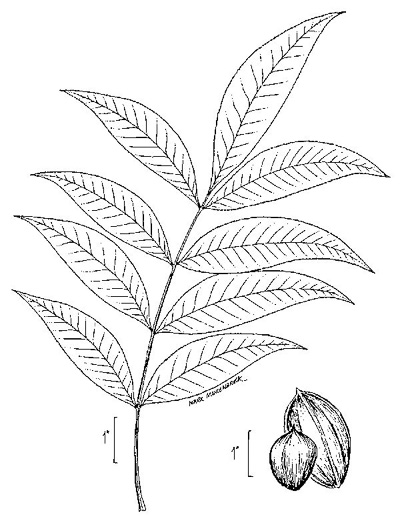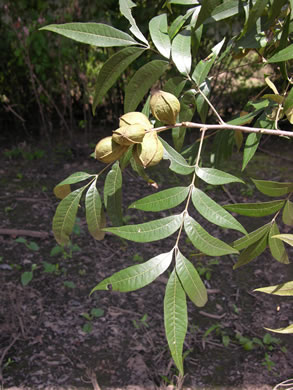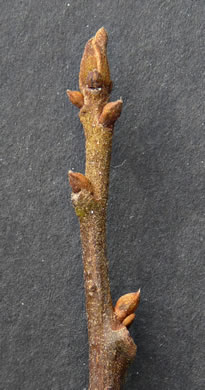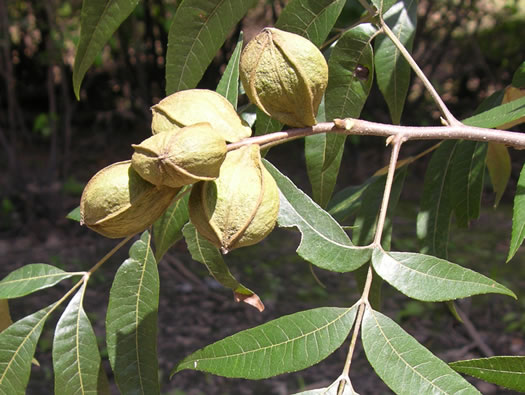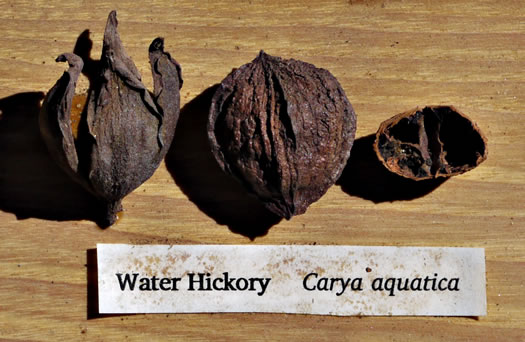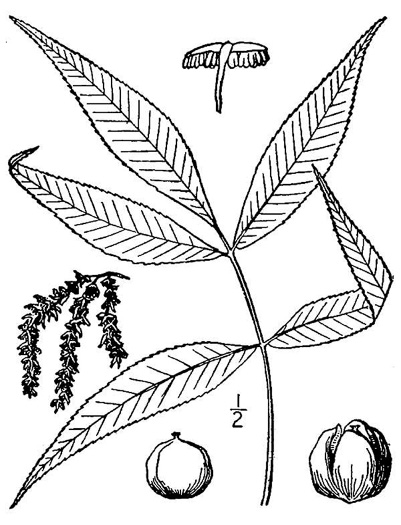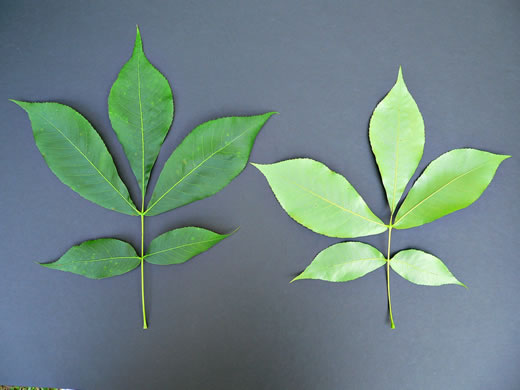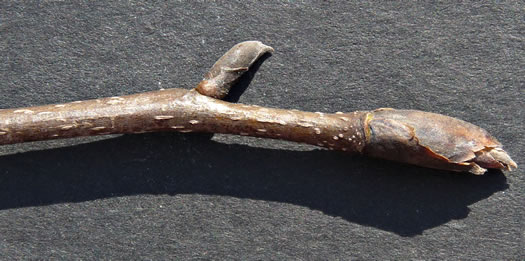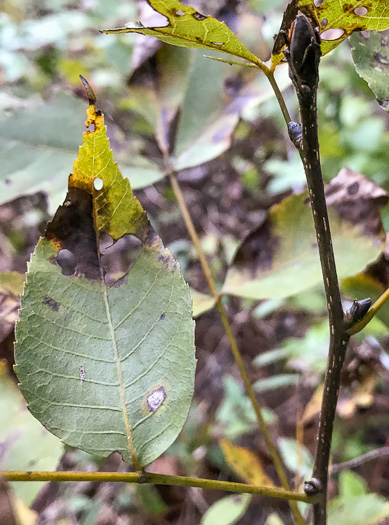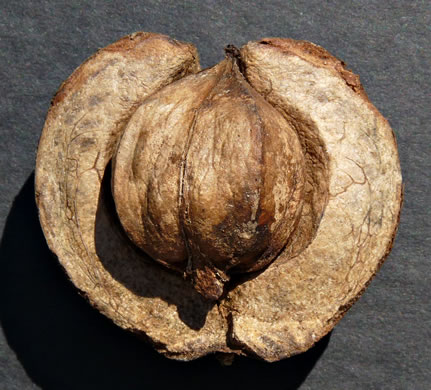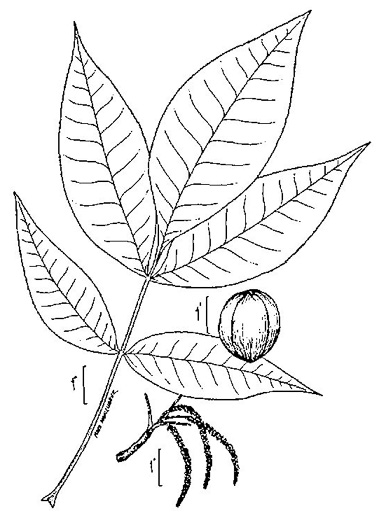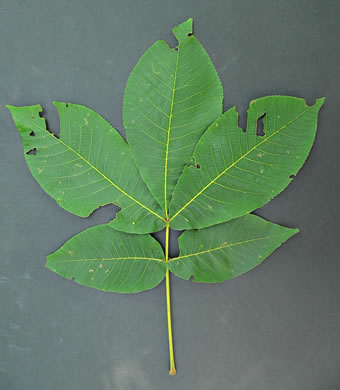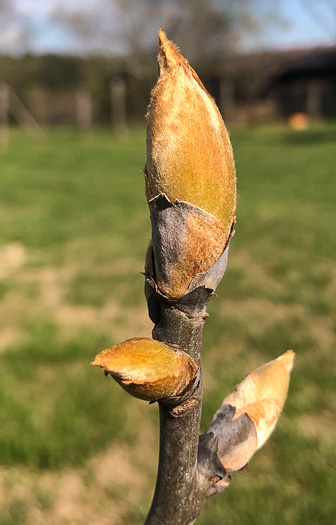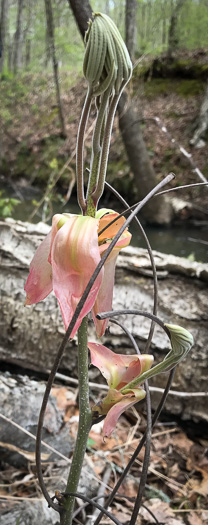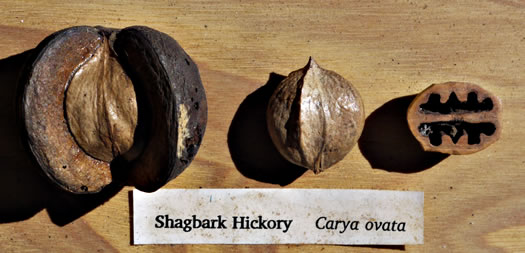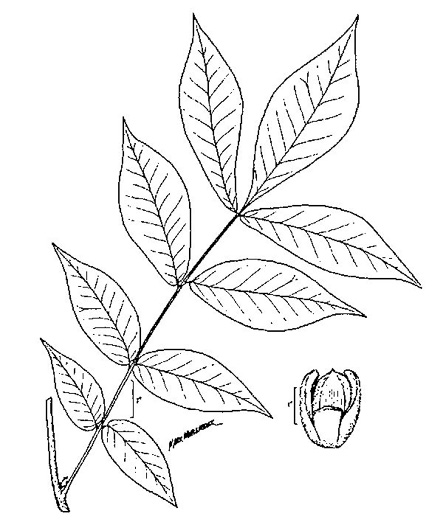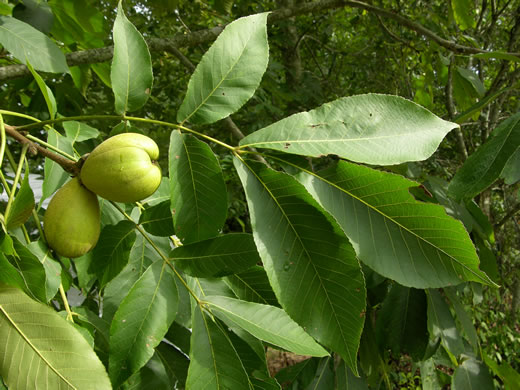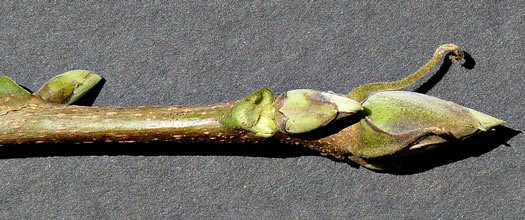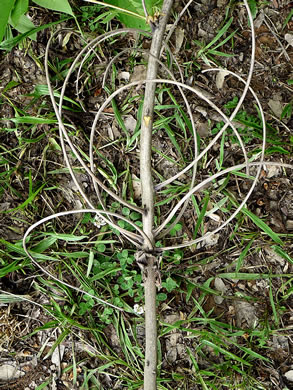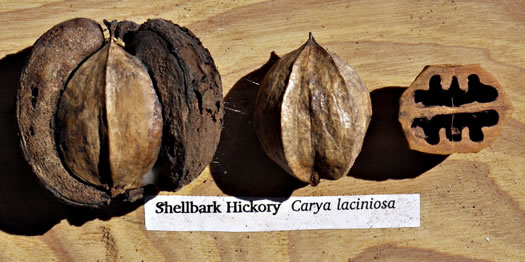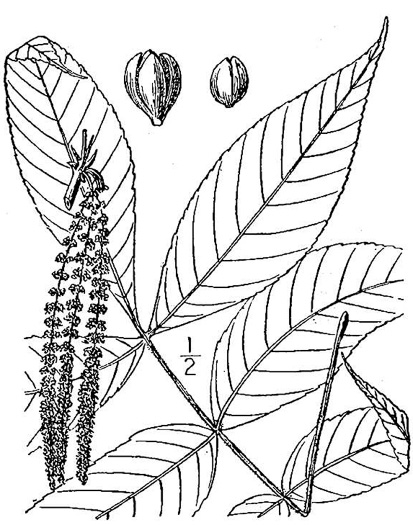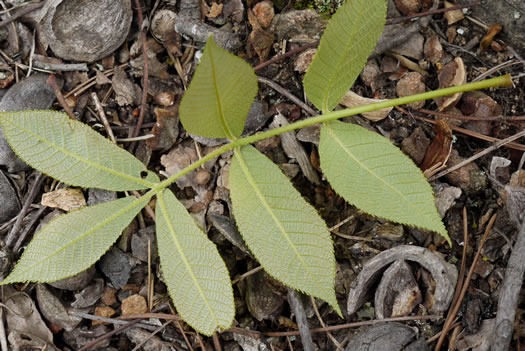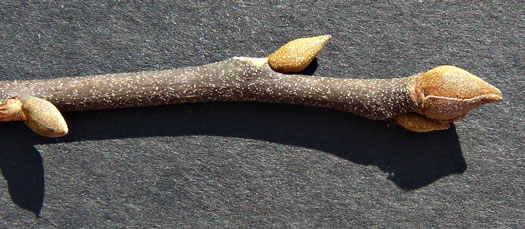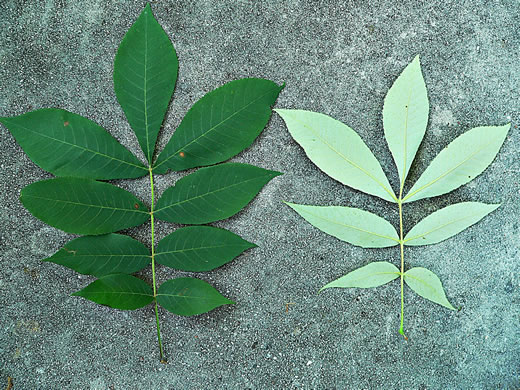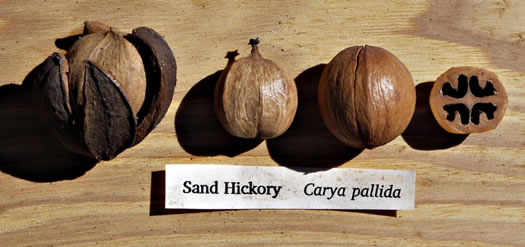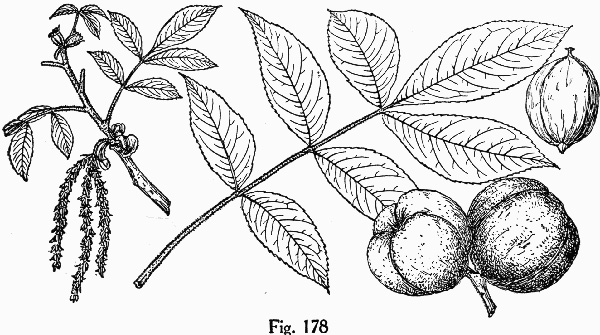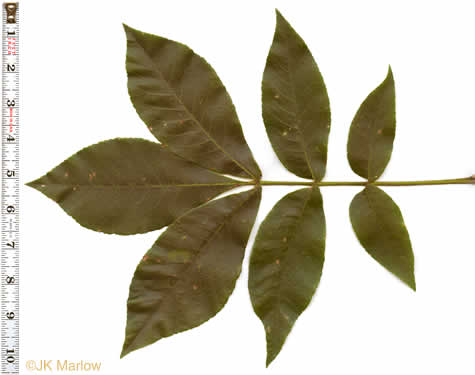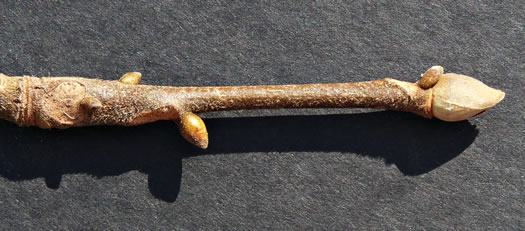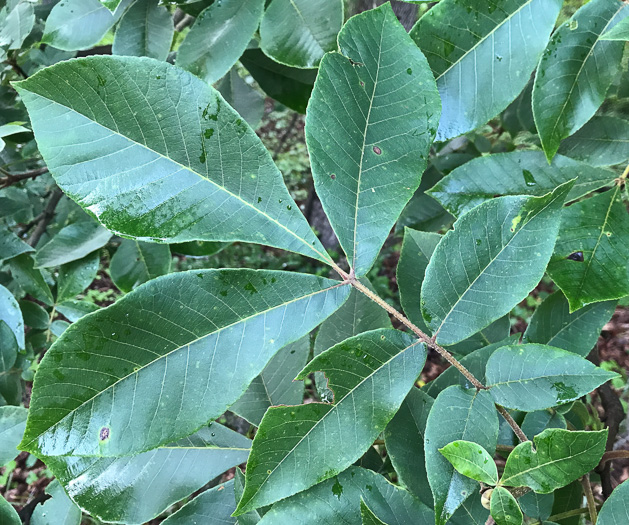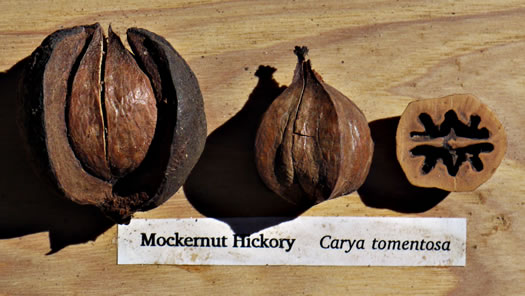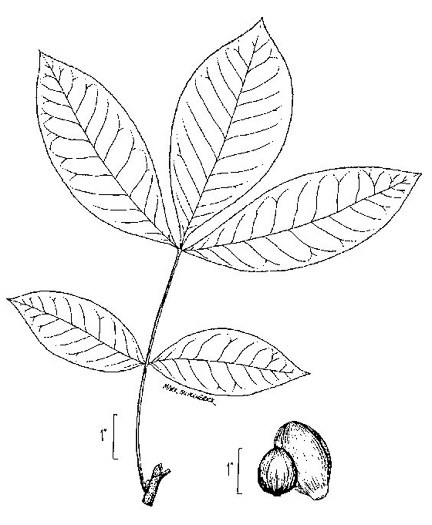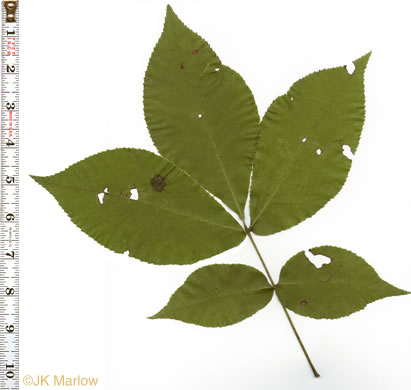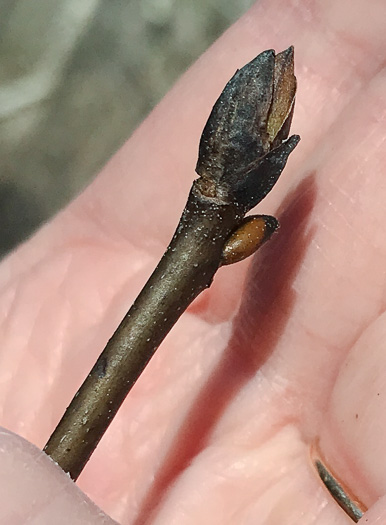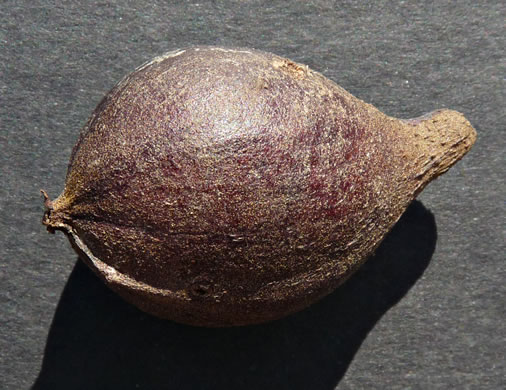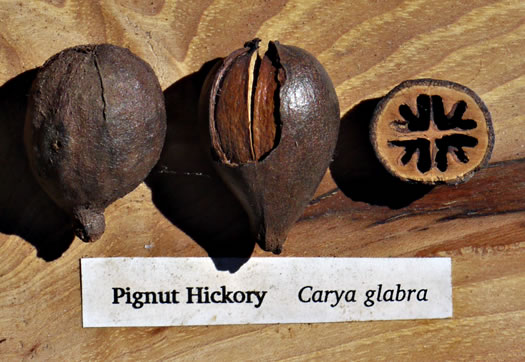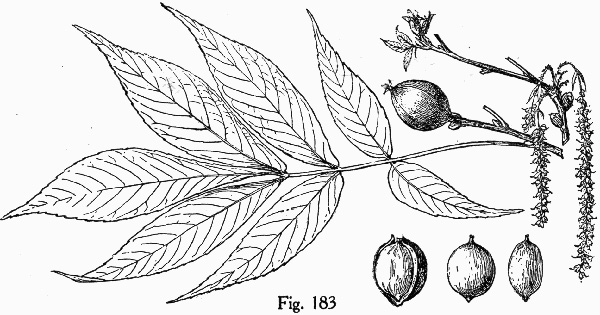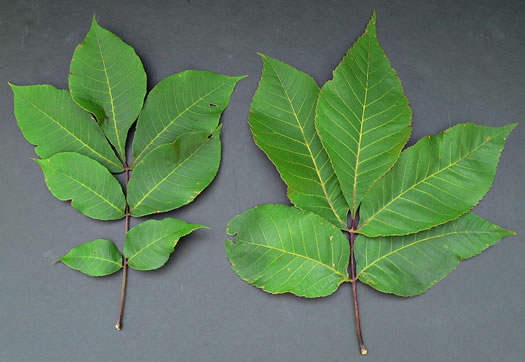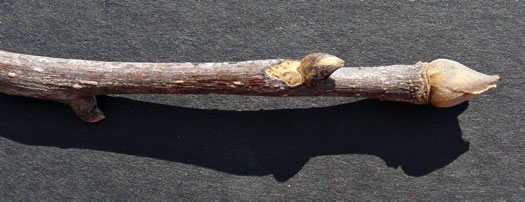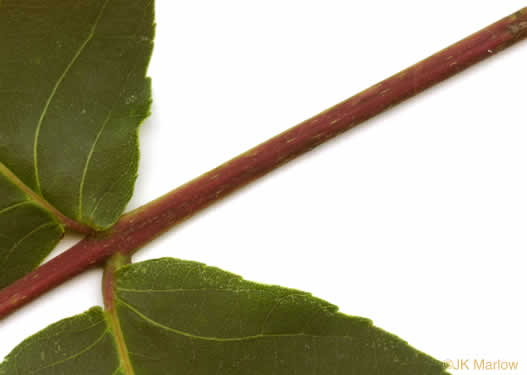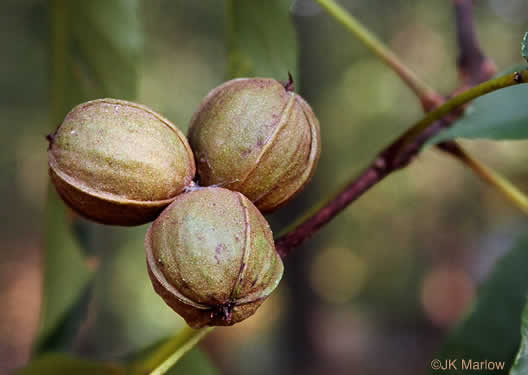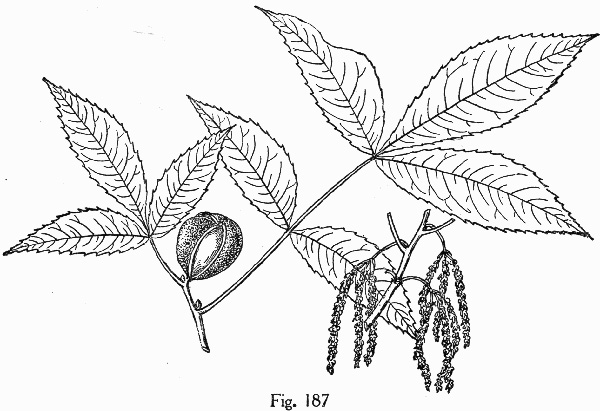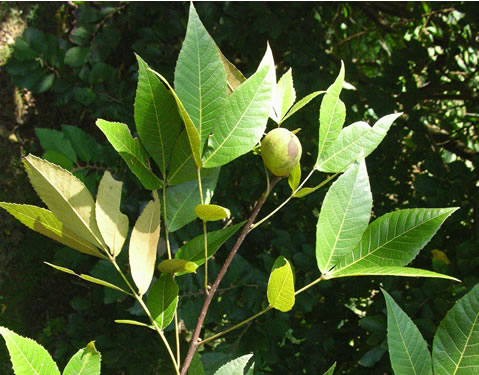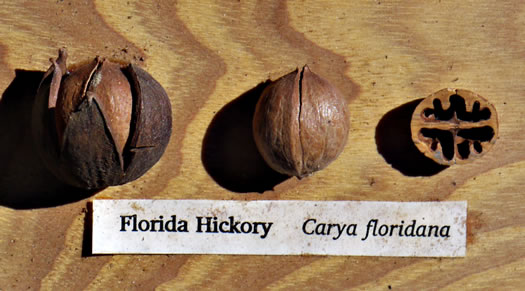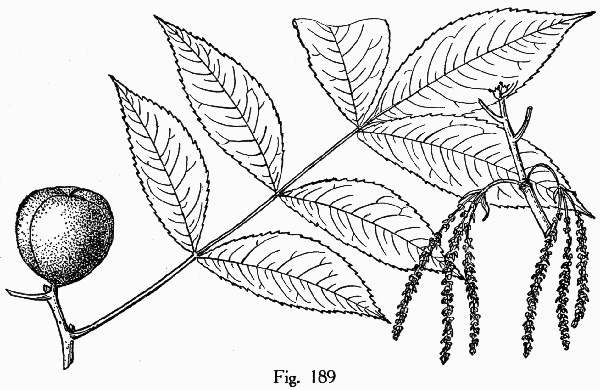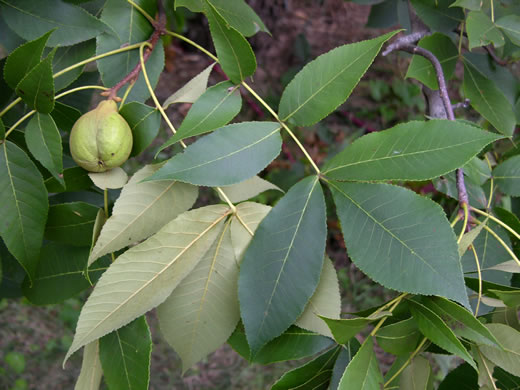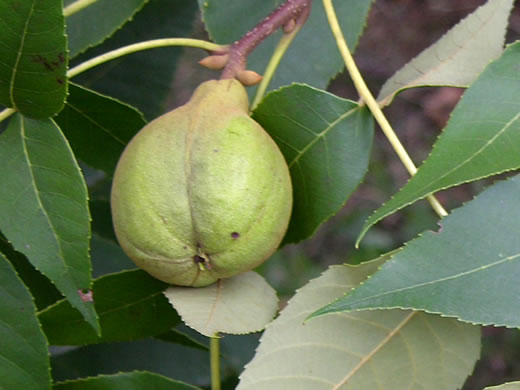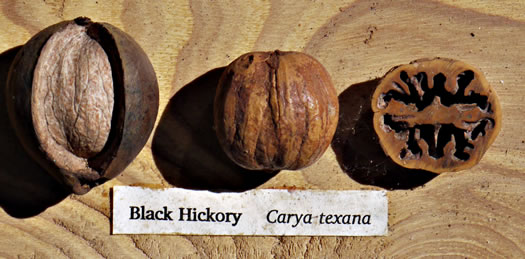Hovering over an image will enlarge it and point out features (works better on desktop than on mobile).
![]() A camera indicates there are pictures.
A camera indicates there are pictures.
![]() A speaker indicates that a botanical name is pronounced.
A speaker indicates that a botanical name is pronounced.
![]() A plus sign after a Latin name indicates that the species is further divided into varieties or subspecies.
A plus sign after a Latin name indicates that the species is further divided into varieties or subspecies.
Most habitat and range descriptions were obtained from Weakley's Flora.
Your search found 15 taxa in the family Juglandaceae, Walnut family, as understood by PLANTS National Database.

![]()
![]() Common Name:
Black Walnut
Common Name:
Black Walnut
Weakley's Flora: (4/24/22) Juglans nigra FAMILY: Juglandaceae
SYNONYMOUS WITH PLANTS National Database: Juglans nigra FAMILY: Juglandaceae
SYNONYMOUS WITH Vascular Flora of the Carolinas (Radford, Ahles, & Bell, 1968): Juglans nigra 053-01-001 FAMILY: Juglandaceae
Habitat: Moist, nutrient-rich forests of floodplains and slopes, calcareous hammocks
Common (uncommon in Coastal Plain of GA & SC)
Native to the Carolinas & Georgia

![]()
![]() Common Name:
Butternut, White Walnut
Common Name:
Butternut, White Walnut
Weakley's Flora: (4/24/22) Juglans cinerea FAMILY: Juglandaceae
SYNONYMOUS WITH PLANTS National Database: Juglans cinerea FAMILY: Juglandaceae
SYNONYMOUS WITH Vascular Flora of the Carolinas (Radford, Ahles, & Bell, 1968): Juglans cinerea 053-01-002 FAMILY: Juglandaceae
Habitat: Moist, nutrient-rich forests
Uncommon in Mountains, rare in Piedmont
Native to the Carolinas & Georgia

![]()
![]() Common Name:
Nutmeg Hickory
Common Name:
Nutmeg Hickory
Weakley's Flora: (4/24/22) Carya myristiciformis FAMILY: Juglandaceae
SYNONYMOUS WITH PLANTS National Database: Carya myristiciformis FAMILY: Juglandaceae
SYNONYMOUS WITH (ORTHOGRAPHIC VARIANT) Vascular Flora of the Carolinas (Radford, Ahles, & Bell, 1968): Carya myristicaeformis 053-02-001 FAMILY: Juglandaceae
Habitat: Hardwood flatwoods, bottomland hardwood forests, riparian and upland calcareous woodlands, nonriverine swamps over calcareous substrates, including calcareous clays and coquina limestone (‘marl’)
Rare
Native to the Carolinas & Georgia

![]()
![]() Common Name:
Pecan
Common Name:
Pecan
Weakley's Flora: (4/24/22) Carya illinoinensis FAMILY: Juglandaceae
SYNONYMOUS WITH PLANTS National Database: Carya illinoinensis FAMILY: Juglandaceae
SYNONYMOUS WITH (ORTHOGRAPHIC VARIANT) Vascular Flora of the Carolinas (Radford, Ahles, & Bell, 1968): Carya illinoensis 053-02-002 FAMILY: Juglandaceae
Habitat: Bottomland forests, hardwood flatwoods, swamps, margins of fields, pastures, often along larger rivers; eastwards (out of native range) introduced and persistent around dwellings and in pecan orchards, escaped to suburban woodlands, rural forest edges and floodplains, also commonly cultivated
Commonly cultivated, commonly escaped or persistent
Native: south central US

![]()
![]() Common Name:
Bitternut Hickory
Common Name:
Bitternut Hickory
Weakley's Flora: (4/24/22) Carya cordiformis FAMILY: Juglandaceae
SYNONYMOUS WITH PLANTS National Database: Carya cordiformis FAMILY: Juglandaceae
SYNONYMOUS WITH Vascular Flora of the Carolinas (Radford, Ahles, & Bell, 1968): Carya cordiformis 053-02-003 FAMILY: Juglandaceae
Habitat: Forests and woodlands, especially in rich, moist alluvial or slope forests
Common
Native to the Carolinas & Georgia

![]()
![]() Common Name:
Water Hickory, Bitter Pecan
Common Name:
Water Hickory, Bitter Pecan
Weakley's Flora: (4/24/22) Carya aquatica FAMILY: Juglandaceae
SYNONYMOUS WITH PLANTS National Database: Carya aquatica FAMILY: Juglandaceae
SYNONYMOUS WITH Vascular Flora of the Carolinas (Radford, Ahles, & Bell, 1968): Carya aquatica 053-02-004 FAMILY: Juglandaceae
Habitat: Swamp forests, where flooded during the winter months
Common in Coastal Plain (rare elsewhere)
Native to the Carolinas & Georgia

![]()
![]() Common Name:
Carolina Shagbark Hickory, Southern Shagbark Hickory, Carolina Hickory
Common Name:
Carolina Shagbark Hickory, Southern Shagbark Hickory, Carolina Hickory
Weakley's Flora: (4/24/22) Carya carolinae-septentrionalis FAMILY: Juglandaceae
SYNONYMOUS WITH PLANTS National Database: Carya carolinae-septentrionalis FAMILY: Juglandaceae
SYNONYMOUS WITH Vascular Flora of the Carolinas (Radford, Ahles, & Bell, 1968): Carya carolinae-septentrionalis 053-02-005 FAMILY: Juglandaceae
Habitat: Upland flats, especially those weathered from mafic rocks and with shrink-swell soils dominated by montmorillonitic clays, less typically on slopes and bottomlands
Uncommon to rare
Native to the Carolinas & Georgia

![]()
![]() Common Name:
Common Shagbark Hickory
Common Name:
Common Shagbark Hickory
Weakley's Flora: (4/24/22) Carya ovata FAMILY: Juglandaceae
SYNONYMOUS WITH PLANTS National Database: Carya ovata FAMILY: Juglandaceae
SYNONYMOUS WITH Vascular Flora of the Carolinas (Radford, Ahles, & Bell, 1968): Carya ovata 053-02-006 FAMILY: Juglandaceae
Habitat: Rich moist bottomlands, slopes, occasionally on dry upland flats
Uncommon (rare in GA Coastal Plain)
Native to North Carolina & Georgia

![]()
![]() Common Name:
Big Shellbark Hickory, Kingnut Hickory
Common Name:
Big Shellbark Hickory, Kingnut Hickory
Weakley's Flora: (4/24/22) Carya laciniosa FAMILY: Juglandaceae
SYNONYMOUS WITH PLANTS National Database: Carya laciniosa FAMILY: Juglandaceae
SYNONYMOUS WITH Vascular Flora of the Carolinas (Radford, Ahles, & Bell, 1968): Carya laciniosa 053-02-007 FAMILY: Juglandaceae
Habitat: Bottomland forests, hardwood flatwoods, swamps; rarely in mesic upland forests and on rich lower slopes
Uncommon in GA Mountains, rare elsewhere in GA & NC
Native to North Carolina & Georgia

![]()
![]() Common Name:
Sand Hickory, Pale Hickory
Common Name:
Sand Hickory, Pale Hickory
Weakley's Flora: (4/24/22) Carya pallida FAMILY: Juglandaceae
SYNONYMOUS WITH PLANTS National Database: Carya pallida FAMILY: Juglandaceae
SYNONYMOUS WITH Vascular Flora of the Carolinas (Radford, Ahles, & Bell, 1968): Carya pallida 053-02-008 FAMILY: Juglandaceae
Habitat: Dry sandy or rocky forests and woodlands
Common
Native to the Carolinas & Georgia

![]()
![]() Common Name:
Mockernut Hickory, White Hickory
Common Name:
Mockernut Hickory, White Hickory
Weakley's Flora: (4/24/22) Carya tomentosa FAMILY: Juglandaceae
SYNONYMOUS WITH PLANTS National Database: Carya tomentosa FAMILY: Juglandaceae
SYNONYMOUS WITH Vascular Flora of the Carolinas (Radford, Ahles, & Bell, 1968): Carya tomentosa 053-02-009 FAMILY: Juglandaceae
Habitat: Forests and woodlands, one of the most common forest trees of much of our region
Common
Native to the Carolinas & Georgia

![]()
![]() Common Name:
Pignut Hickory
Common Name:
Pignut Hickory
Weakley's Flora: (4/24/22) Carya glabra FAMILY: Juglandaceae
SYNONYMOUS WITH PLANTS National Database: Carya glabra FAMILY: Juglandaceae
SYNONYMOUS WITH Vascular Flora of the Carolinas (Radford, Ahles, & Bell, 1968): Carya glabra 053-02-010 FAMILY: Juglandaceae
Habitat: In a very wide variety of forests and woodlands
Common
Native to the Carolinas & Georgia

![]()
![]() Common Name:
Red Hickory, Sweet Pignut Hickory
Common Name:
Red Hickory, Sweet Pignut Hickory
Weakley's Flora: (4/24/22) Carya ovalis FAMILY: Juglandaceae
SYNONYMOUS WITH PLANTS National Database: Carya ovalis FAMILY: Juglandaceae
SYNONYMOUS WITH Vascular Flora of the Carolinas (Radford, Ahles, & Bell, 1968): Carya ovalis 053-02-011 FAMILY: Juglandaceae
Habitat: Forests and woodlands
Common (rare in GA Piedmont & SC Coastal Plain)
Native to the Carolinas & Georgia

![]()
![]() Common Name:
Scrub Hickory
Common Name:
Scrub Hickory
Weakley's Flora: (4/24/22) Carya floridana FAMILY: Juglandaceae
SYNONYMOUS WITH PLANTS National Database: Carya floridana FAMILY: Juglandaceae
Habitat: Florida yellow-sand scrub, longleaf pine sandhills
Native: Florida

![]() Common Name:
Black Hickory
Common Name:
Black Hickory
Weakley's Flora: (4/24/22) Carya texana FAMILY: Juglandaceae
SYNONYMOUS WITH PLANTS National Database: Carya texana FAMILY: Juglandaceae
Habitat: Dry upland woodlands, glades, bluffs, sand barrens
Native: west of the Carolinas & Georgia
Your search found 15 taxa. You are on page PAGE 1 out of 1 pages.

